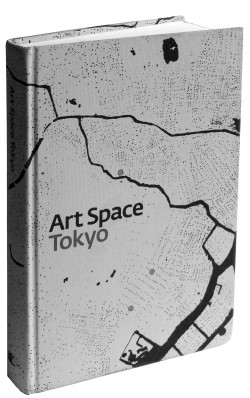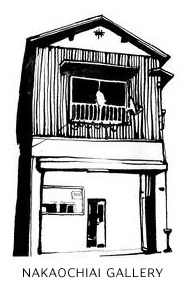
Art Space Tokyo: An Intimate Guide to the Tokyo Art World, by Ashley Rawlings, Craig Mod, Takahashi Nobumasa, Chin Music Press, 2008 (Seattle — Tokyo), hardcover 272pp.
[I]N AN ESSAY on art journalism early on in Art Space Tokyo (AST), Ozaki Tetsuya (publisher and editor of ARTiT, a bilingual art magazine) laments the state of art criticism. Writing about three exceptional critics of the past, he relates, “…During their careers they were engaged with a community of people that transcended the boundaries of professions: poets, novelists, artists, designers, playwrights, filmmakers, actors, editors and TV producers all gathered together with them in smoking salons where they engaged in fierce discussion. In the present age, there is no such culture.”
That may be true, but AST is essentially one big conversation between the shapers of Tokyo’s contemporary art community, full of ideas and opinions, analysis, history, characters and spirit. Here is a book that attempts to chart the ever-shifting Tokyo art scene since the early ‘90s via essays and interviews with curators, collectors, artists, journalists, art fair directors, critics and bloggers. Their multiple perspectives are woven around the core of the book: twelve art “spaces” (galleries and museums) that the book’s “assemblers” find particularly unique, and about which they frame this open-ended discussion. The spaces could not be more different in appearance and approach, from 21_21 Design Sight, a “giant workshop”; to Gallery éf, a 140-year-old kura that promotes young unknown artists; to Tokyo Gallery + BTAP, a famous long-standing Ginza gallery with an art project in Beijing; to Nakaochiai Gallery, a renovated house in a residential area that shares art with the neighborhood; to Miyazaki Hayao’s cozy mini castle of animation, the Ghibli Museum.
In the course of this wide-ranging discussion, vital questions are raised and addressed: Is the pervasive “white cube” the best possible way to exhibit art? How did contemporary art survive during and after Japan’s “bubble”? What is the relationship between art in Tokyo and the rest of East Asia? How can art function in public spaces? Who supports contemporary art? What has changed in the last 15 years? How do you design an art space in Tokyo — the city of perpetual “demolition and reconstruction”? What makes an exhibition succeed? (Communication!)
 At its best, AST delves into the larger questions of culture, creativity and urban space. Consider the take of Futagawa Yukio, director of Ga Gallery (a space dedicated to architecture) on the large-scale developments of Roppongi Hills and Tokyo Midtown: “Essentially, their existence is solely based on economic principle: they are machines that create money on site, using fashion and trends. Those developments have been built to create the illusion of a cultural space, but those kinds of spaces are absolutely not what people should perceive as cultural space or public space. True public spaces take a long time to grow. Those kind of instant cities are appropriate for Disneyland, closed to the public and experienced for limited spans of time. But I think that allowing this kind of reality to exist in an uncontained, borderless manner in an area like Roppongi is damaging to the potential for cultural growth in this city.”
At its best, AST delves into the larger questions of culture, creativity and urban space. Consider the take of Futagawa Yukio, director of Ga Gallery (a space dedicated to architecture) on the large-scale developments of Roppongi Hills and Tokyo Midtown: “Essentially, their existence is solely based on economic principle: they are machines that create money on site, using fashion and trends. Those developments have been built to create the illusion of a cultural space, but those kinds of spaces are absolutely not what people should perceive as cultural space or public space. True public spaces take a long time to grow. Those kind of instant cities are appropriate for Disneyland, closed to the public and experienced for limited spans of time. But I think that allowing this kind of reality to exist in an uncontained, borderless manner in an area like Roppongi is damaging to the potential for cultural growth in this city.”
AST is rounded out with essays on art criticism, history, alternative art spaces, media, Tokyo graffiti, and Murakami Takashi. At first I was unfamiliar with many of the artists mentioned in the book and wanted to see their work. But the AST creators wisely limited their scope, for this is a book about the entire edifice of the art scene.
The book’s finely crafted maps accompanying each art space, its tips on where take a stroll, where to get a good cup of Joe or tasty bowl of curry, reveal an abiding love and curiosity for the city. AST is a beautifully executed book, from the exquisite typography to the cloth-bound cover with Craig Mod’s cool image of Tokyo chome and water, to the lovely ink portraits of Takahashi Nobumasa that enliven each chapter. Hats off! I will slip this volume in my backpack for my next trip to Tokyo, which will surely include visits to some of the galleries reviewed in its pages.



